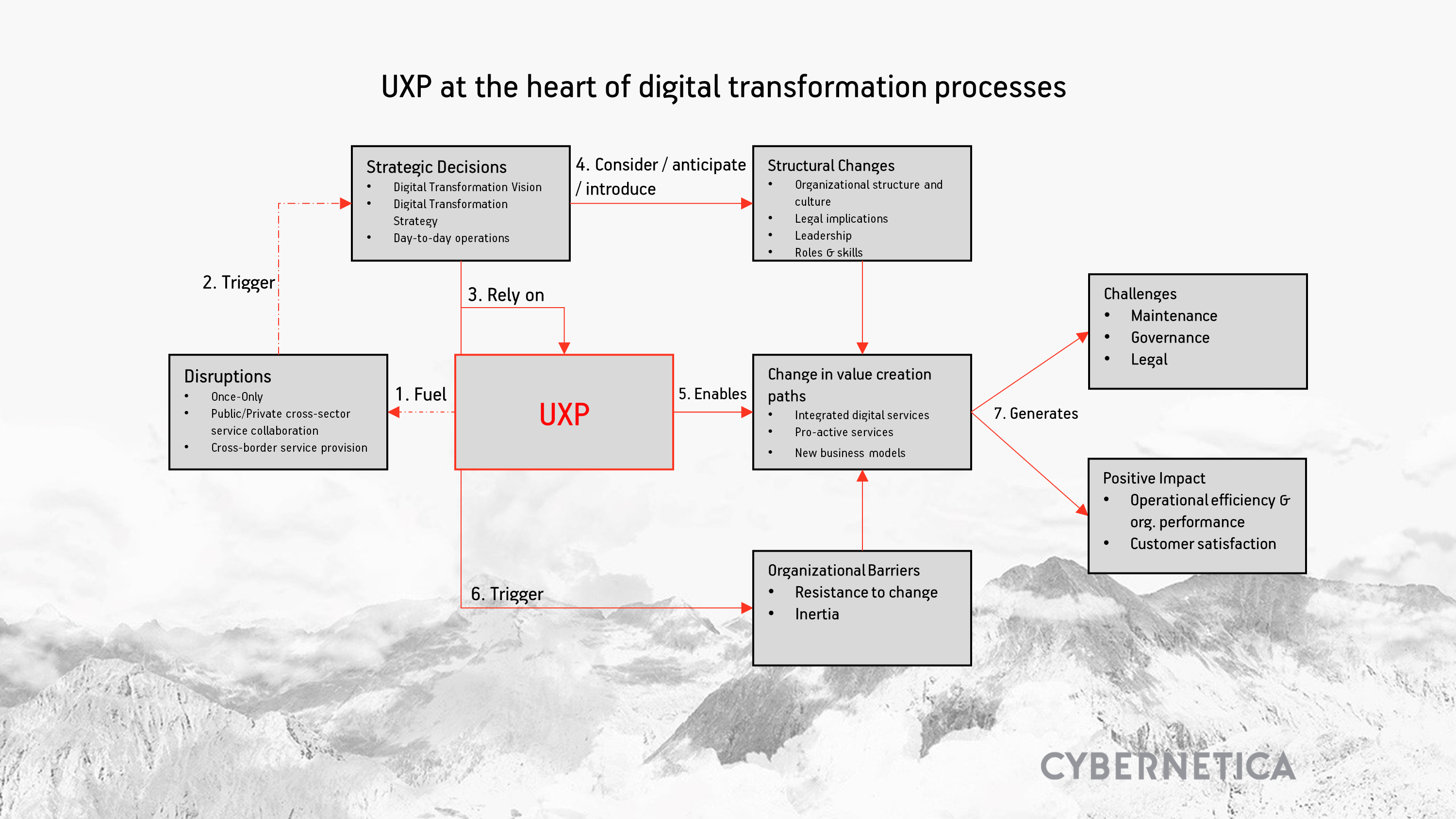Cybernetica’s UXP comes with the promise of facilitating data exchange between independent stakeholders in a trusted environment. The underlying technology has been lauded internationally and is considered to be the backbone of the digital transformation of the administration of the Republic of Estonia. UXP’s aspiration remains to see public or private sector clients’ digital transformation projects thrive thanks to the data exchange platform.
It’s an often-cited rule, however, that the best technologies can only go as far as their owners allow them to go. That's why we put together a blog series addressing the organisational, leadership and change management issues that come along with the implementation of UXP.
We will start with a brief outline of UXP-backed digital transformation and its implications for organisations. The second blog will introduce the stakeholders in UXP deployments, and the third highlights a couple of leadership and change management lessons crucial to successful UXP deployment.
Digital Transformation
Once something has become a buzzword, it’s complicated to filter out its actual meaning. This certainly applies to digital transformation; the more noteworthy it is that Gregory Vial, a professor at Canadian HEA Montréal, reviewed 282 works on digital transformation to get a „comprehensive portrait of its nature and implications“ (Vial, 2019, 1).
According to Vial, during the analysis eight overarching building blocks emerged that reflect the current knowledge about digital transformation. These also act as a basis for the definition of digital transformation: „[digital transformation is] a process that aims to improve an entity by triggering significant changes to its properties through combinations of information, computing, communication, and connectivity technologies” (ibid, 9). The eight building blocks can be seen in the graphic below, with UXP at the centre, and they form the basis for impact that UXP has on an organisation.
The concept of the building blocks and the definition tell us a great deal about the challenge of digitally transforming a business or any major operations, because they emphasise the multitude of business areas that need to be addressed in order to succeed in transforming the modus operandi. It’s far from just IT, it’s a lot about the combination of interdisciplinary skills from the areas of IT, communication, and (business) management.

Based on Vial, Gregory: Understanding digital transformation: A review and a research agenda, in: Journal of Strategic Information Systems Review, Volume 28, Issue 2, June 2019, Pages 118-144
UXP at the Heart of Digital Transformation Processes
I took the liberty to adjust Vial’s work to the UXP context and add a couple of things that I’d like to emphasise. First of all, what can be seen is that the availability or adoption of technology like UXP fuels disruptions like the once-only principle, integrated private/public sector services, and cross-border service provision. These break with the status quo of doing things and can establish completely new ways of doing business, yet also pose a challenge to manage the status quo. Disruptions and the availability of certain technology such as UXP can trigger strategic decisions that intend to make use of UXP-fuelled disruptions to an organisation’s own advantage: e.g. a government agency that realises it’s better off building a digital service based on UXP together with another government agency, rather than doing it on their own, because it saves resources and will improve the user experience for citizens.
This is a very central point: strategic decisions can highlight the kind of technology that an organisation intends to rely on. Yet, it’s maybe even more important to outline the intended impact and acknowledge that the intended new way of doing things will very likely have an impact on the organisation’s overall functioning and might run into organisational barriers like resistance to change during implementation.
Strategic decisions certainly need to pay respect to that, anticipating not only UXP-enabled change in value creation paths, but also the likely necessity of structural changes in organisational culture, leadership, or the reassignment of roles and skills to successfully lead an (or multiple) organisation’s digital transformation.
In that regard, UXP as the centrepiece of digital transformation can enable completely new business models, yet it requires the foresight, active management, and leadership to bring these new business models and their positive impacts to fruition and overcome the challenges along the way.
Outlook: Tackling the Challenges Along the Way
This is all pointing in one direction: ownership and leadership are necessary on behalf of the client for UXP to create the value it was acquired for. As UXP facilitates data exchange between multiple independent stakeholders, its success relies even more on a supportive environment and an understanding of its collaborative nature.
In the next article we will outline in more detail the roles in UXP deployment, and in the week after, describe practically what can be done in terms of ownership and leadership to make UXP-backed digital transformation a success story.
Did you know we offer advisory services for your UXP-backed digital transformation? Read more about it here: https://cyber.ee/products/secure-data-exchange/advisory/
Written by Tobias koch
Reference:
Vial, Gregory: Understanding digital transformation: A review and a research agenda, in: Journal of Strategic Information Systems Review, Volume 28, Issue 2, June 2019, Pages 118-144